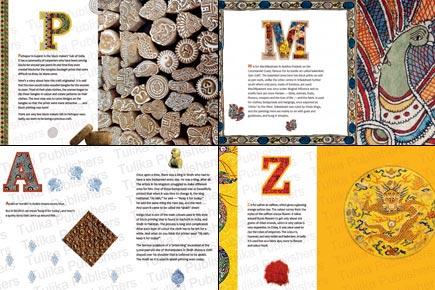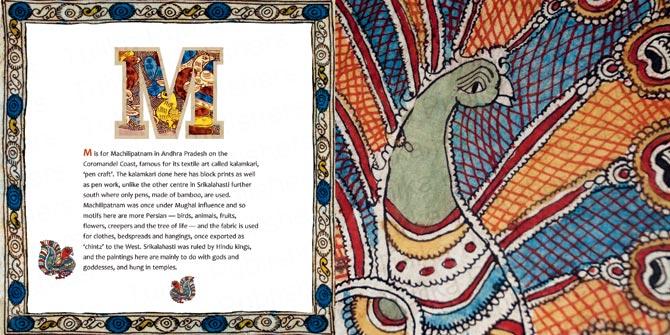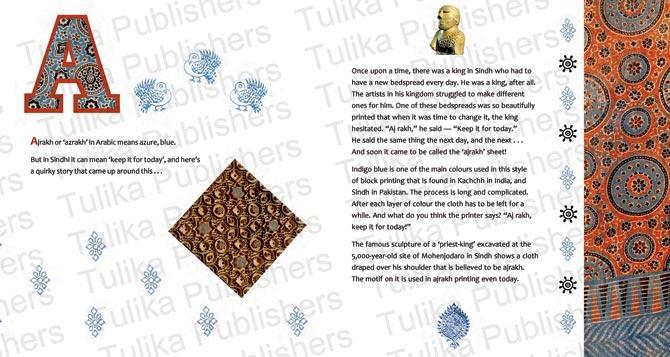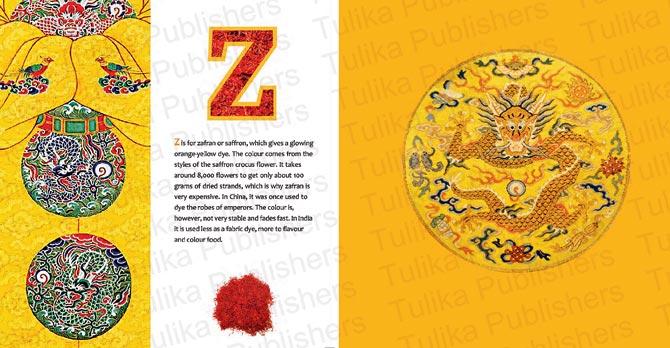If the Madhubani print on your saree intrigued you, or the jaalis of the Taj Mahal wowed you, Nina Sabnani’s book will open a window into the world of block printing


Nina Sabnani
ADVERTISEMENT
Was the idea to write A for Ajrakh a natural transition from your love for textiles?
My love for textiles and stories of how things came to be, and meeting amazing traditional artists coalesced to look at one of the world's oldest practices. I came across such wonderful tales that I felt they had to be shared. When you next look at your block-printed clothes or cushions, they would evoke those memories and make you appreciate all that went into its making. Children often play with pressing their hands in paint and making their impressions on paper or walls. They may appreciate that this can be taken further. Tulika books has a series on Looking at Art and they felt this could be a part of it, which made it all the more exciting to take this to such a platform. The book is for all ages, though I would say it is a picture book for young adults. It would be useful for school children learning about heritage as well.

Why do you feel that young minds need to be aware about block printing?
I hope so! In an age of brand consciousness it is equally important to appreciate our rich legacy and take it forward. While researching the book, we came across a lot of young artists who are taking pride in their traditional arts and taking them forward to compete with everything else around. Just to name a few, Bilal Khatri in Madhya Pradesh, Sarfaraz in Mumbai, Sufiyan Khatri in Kutch and Dheeraj Chhipa in Rajasthan are all young artists doing amazing work in block printing, and are quite successful too. This is to acknowledge them and their spirit to inspire other young people.

Tell us about the research that this book entailed.
It was the most exciting part of making the book. I talked to many people who are either involved in block printing or work with block printers. There is an excellent amount of literature too, but the narratives were found by speaking to the artists as well as my dear textile designer friends who are too many to name here. I also visited a lot of the places where I could spend time listening to the artists and understanding the context in which they work. Over cups of tea and wandering around their studios and workshops, I learned about some origin myths, processes and future plans. Tulika editors Radhika Menon and Deeya Nayar worked closely with me. For each letter except X, Y and Z (which were tough) we had a number of options which we discussed threadbare and changed them around quite a lot so that we covered all the themes we had in mind. Some are already popular and known so we left them out, like N for Natural Dyes. There were others which we were sorry not to include but the challenge was to keep it broad and diverse so it was inevitable.

Launches Today, 6.30 pm onwards
At Artisans', VB Gandhi Marg, Kala Ghoda.
Call 9820145397

Panels from the book, A for Ajrakh...The A to Z of Block Printing
 Subscribe today by clicking the link and stay updated with the latest news!" Click here!
Subscribe today by clicking the link and stay updated with the latest news!" Click here!






